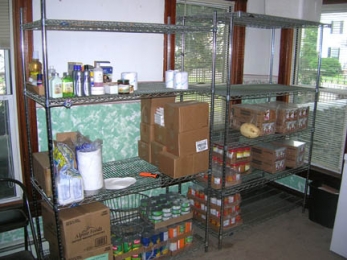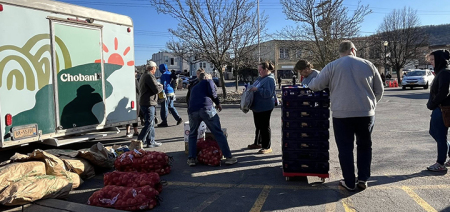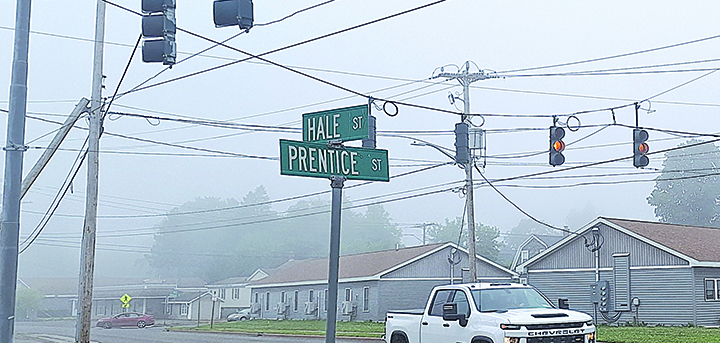Special Report: Hunger Has A Home In Chenango
Published:
September 4th, 2007
By:
Michael McGuire

“We thank God that we have this place,” said an elderly woman before loading a few boxes of groceries into the back of a car.
She’s one of more than 1,000 people in the last year who depended on the St. Malachy’s Food Pantry in Sherburne.
“Sometimes it can be heartbreaking,” says Sandy Mulligan, who distributes food once a month there with her husband Paul. “It brings tears to your eyes to see some people come in in such bad shape.”
While it may not be the most obvious local issue, hunger has a home in Chenango County, representatives from several charitable, health and social service agencies say, and it’s determined to stay – if not expand.
“You see new clients everyday,” Mulligan said. “They just don’t have the money to go out for food.”
Families in need
St. Malachy’s pantry coordinator Paula Lathrop says the majority of the 640 Sherburne/Smyrna area households receiving meals represent working families. The same goes for the 2,272 homes that use food stamps county-wide, says Department of Social Services Income and Child Support Director Sue Curnalia. But low living wages, combined with high fuel, food and rent costs, often leave many of these families short when it comes to having grocery money near the end of the month.
“The end of the month is hard. By the time we get the bills paid, there isn’t much of anything left for groceries,” said one Sherburne pantry client, a 62-year-old single father on disability, who wished to remain anonymous. “Without the pantry we’d have trouble eating.”
A factory worker and janitor for 30 years, he and his 12-year-old son have been coming to the pantry for four months.
“It’s easier for an adult to get used to, but it’s kind of rough for a kid,” the man said. “He handles it good. There’s been times when he’s wanted things but he knows we can’t afford them. He understands.”
When asked what it’s been like if there hasn’t been enough money for groceries, the boy said he’s gone out and collected cans and bottles and searched for loose change.
“Sometimes dad will mix foods together when we’re low,” the 12-year-old said. “It’s pretty good.”
“We’ll have Hamburger Helper without the hamburger,” his dad added, saying the summer has been difficult because they’ve had to account for meals the school provides the rest of the year.
When asked if hunger was problem outside of his own home, the 62-year-old single father said he thought it was.
“There’s a lot of others in the same boat that don’t want to swallow their pride,” he said. “A lot of kids go hungry because of it.”
Poverty, by the numbers
Based on most recent available statistics, as of 2001, there were 5,937 county residents experiencing food insecurity – meaning they don’t have access at all times to enough food for an active, healthy life, as defined by the U.S. Department of Agriculture. In all, there are currently 6,872 people in the county estimated to be living below the U.S. Census Bureau’s poverty line. That’s 13.5 percent of Chenango’s total population of 51,787.
Statewide, poverty and food security numbers have leveled off in recent years. According to the Hunger Action Network of New York state (HANNYS), 60 percent of New York’s 2 million food pantry clients live upstate. In all, 10.5 percent of the state’s households are food insecure.
Cost of living
Based on employment figures from the New York State Department of Labor, currently the top four job openings in the Southern Tier, which includes Chenango County, are for cashiers, retail sales, waiters and waitresses, and janitors and cleaners. According to adjusted figures for the county offered by Penn State, the average salary for all four of those jobs combined is $8.22 per hour, or $22,966 per year before taxes.
According to living wage statistics provided by Penn State University, a one adult, one child household in Chenango County would need to earn $23,270 as an after-tax yearly income to cover all food, child care, medical, housing, transportation and other expenses. A two adult, two child household would have to earn $34,088.
Programs like Food Stamps, Temporary Assistance, the Home Energy Assistance Program (HEAP), the Children’s Health Insurance Program (CHIP) and the Women, Infants and Children (WIC) nutrition program are available through agencies like the Department of Social Services and Opportunities for Chenango to help offset living costs.
“I’m very restless”
“We’ve eaten pancakes for a month straight before,” a 42-year-old former construction worker said, surrounded inside St. Malachy’s pantry by his wife, 33, and the younger two of his three children, ages 13, 9 and 4. “That’s all we could do. You get tired of eating pancakes after that long.”
After suffering head injuries and permanent short term memory loss in a work-related accident, this Sherburne resident says he’ll most likely never be able to work construction again, nor, as a certified commercial driver’s license holder, drive truck, either. His case is currently tied-up in litigation, he said.
“I’m very restless, I feel like I should be out there,” he said, explaining that he hasn’t yet been cleared by doctors to work after suffering the accident 10 months ago.
He says right now his family depends on the shelter for the “essentials,” like cereal for the kids, along with meat and dairy products. The former construction worker believes he will work again, and that their situation is only temporary.
“You have to have faith,” he said. “You have to believe it will get better...this (the pantry) helps to get us through.”
Is there anybody out there?
There are a total of 19 pantries across the county. One of the few that is open five days a week during business hours is run by the New Berlin Housing and Preservation Company. Serving roughly two households a day, New Berlin coordinator Ester Doty said the challenge, which is the same for most pantries, is staying stocked and funded.
“We’ve never actually run out of food,” Doty said, admitting that at times, with recent flooding, busy summer months and holidays, supplies have been squeezed. “But it’s rough. Funding is tightening up. It’s harder to get grants. A lot of pantries are tossing it up or down whether to close or not.”
She said donations from the Stewart’s Shop in New Berlin and the Save-A-Lot in Norwich have been crucial. However, the majority of funding and supplies comes through grants and the Food Bank of Central New York.
Author: Michael McGuire - More From This Author
Comments







